This was genuinely one of the first images that came up when we googled “rape victim.”
Whilst many newspapers have recently taken the positive steps of having strong ethical editorial rules on how they report on rape and sexual violence, there is a divide been the words on the page and the image tacked alongside them. From broadsheets to tabloids, clickbait to blogs, ‘stock image rape victims’ push the same reductive narratives and myths.
The ‘stock image rape victim’ is almost universal within the British press. Hunched over like a gargoyle, there she is. She’s sprawled on a bed or on the ground within a darkened room; lurking in the shadows. Sometimes for added drama, she’ll be peering timidly through curtains or window blinds, allowing slits of light and dark to reveal the outlines of her body, like a zebra crossing or a barcode. In others, she clasps her fingers over her face in despair and shame, her gaze obscured by a net of knotted knuckles.
As a journalist specialising in issues of sexual violence within my writing, I’ve noticed more and more how many quality newspapers trot out the same images, undermining their supposedly thoughtful, supportive messages to victims elsewhere in their articles.
The images reduce the victim or survivor of sexual violence to a ‘dark and demented’ trope. The victim is presented as goblin-like and unhinged; lurking, ashamed and disturbed in literal shadows. This simplistic narrative pushed by the media only gives weight to cliched ideas and the many stereotypes and myths surrounding rape victims. That they are troubled, constantly distraught and inarticulate.
With the many victims of sexual violence who I have met and interviewed whilst writing about the issue, I have seen people deal with their experiences in different ways. There is no denying the huge trauma of these crimes and the enormity of the pain and suffering, but it is disingenuous and offensive to survivors to paint them as constantly unstable, gibbering wrecks. To do so only adds to the stigma which many feel.
Perhaps one of the most problematic features of these “lurking in the shadows” stock images, is the models faces, or lack thereof. Invariably the model’s face will be obscured, by either a dark shadow cast across her face or by her own flesh as she encases her face in her fingers.
One of the reasons why the stock image rape victim’s face is obscured might simply be down to practicalities. With inexperienced or poor quality models who often fill the books of stock image photographers, they might be more used to creating scenes of them laughing with salad, or reproducing the basic poses that form the stock image catalogue. The image of the rape victim is by far one of the most emotionally complex ones for both model and photographer to recreate. Perhaps some feel its better to show no facial expression at all, then go for complex emotions and botch them with a poor model and this leads them to obscure the face to avoid taking that risk.
But the result of these faceless victims is disturbing and feeds into many of the problematic narratives perpetuated by the media surrounding rape. This renders the victims faceless, almost decapitated, blank spaces. There is no person behind them, they are simply a vessel for emotion, trauma and grief.
The victim does not look like anyone you know, they do not look like you, or your mother, your father, your friend or your colleague. They are not a real person, with distinguishing features or unique characteristics. The victim is a phantasmagorical floating idea. This only cements the mistaken idea which many people have that rape is something that happens to ‘someone else’.
It furthers the idea of the victims as being ‘other’; people who are not like us, going through things unlike anyone we know, and in ways that don’t affect the people we know. We are encouraged to think of rape in the abstract, not something that happens to real people. This only distances people from the reality of the prevalence of sexual violence within their own communities and social spheres.
Furthermore, the stock images are invariably young, slender white women. This ignores the experiences of many men, older people and people of colour. Instead, the focus is on establishing a ‘damsel in distress’ type narrative, of attractive young blonde girls who need protection and sympathetic gaze.
Much progress has been made by many media outlets in recent years when it comes to how we report on sexual violence. We shouldn’t let sensitive, supportive articles be undermined by the images we use to illustrate them. We strive to challenge media narratives and cultural myths of the ‘ideal’ or ‘real’ victim of sexual violence elsewhere in the press. It’s time we addressed the ‘stock image rape victim’ and everything she represents too.

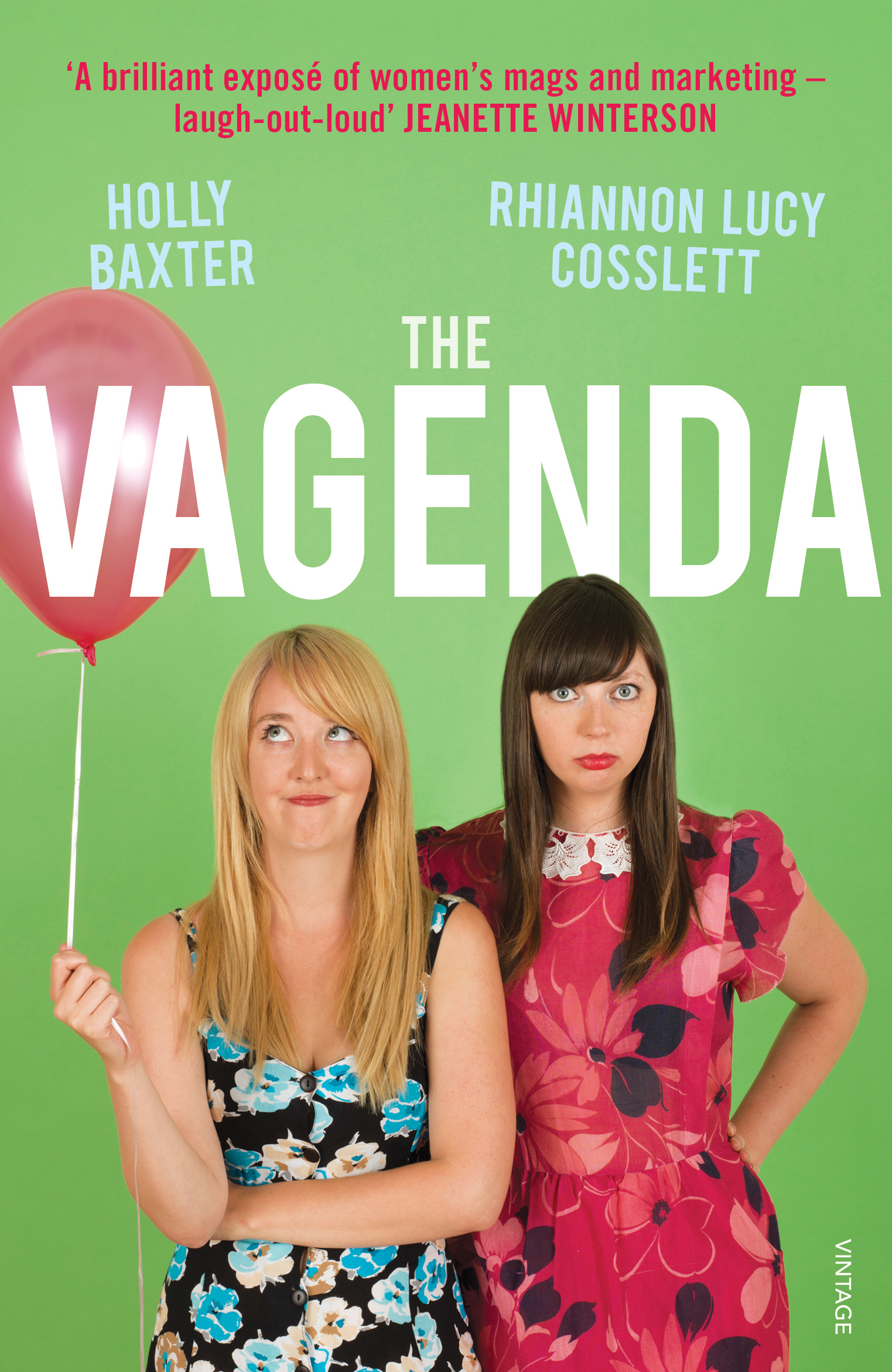
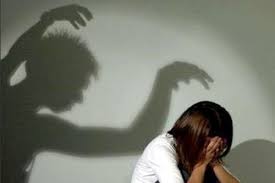
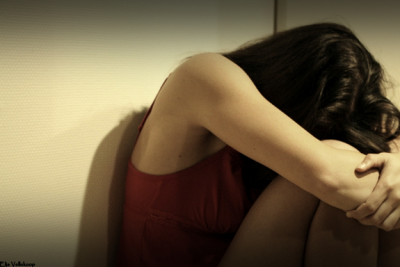
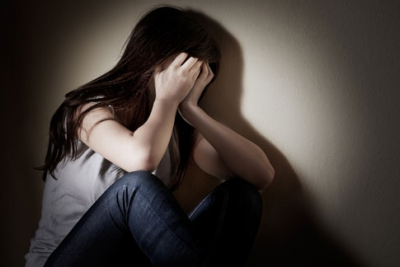
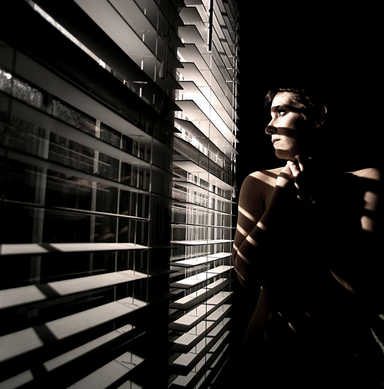
I think an important factor is the choice of the model. However worthy a cause, I can imagine most would not want their face being associated with rape.
Why not? Is there something shaming about being raped?
It’s so annoying when rape victims are portrayed as cowering, fearful, and worst of all, alone and helpless. I’m not saying that this doesn’t happen (and there’s nothing wrong with the victims: there’s no “appropriate response” to rape). It’s just that the pictures portray the outlook as universally gloomy and lonesome, forever. What’s worse is that these stock photos present a single idea of the rape victim’s response. I’ve noticed that if you don’t act “traumatized enough”, you risk facing the judgment and disbelief of your peers (and maybe the jury). I hate this fine line – “just traumatized enough.” I’ve seen a classmate boldly state that she had been raped, and that she did not blame herself at all – and she was disbelieved. On the other hand, one of my closest friends was assaulted and held it within herself for years, becoming more and more depressed, and was finally asked why she hadn’t told someone earlier. I detest this idea of an “appropriate” reaction to abuse. Thank you for shedding light on this issue.
An excellent article – thank you!
This a thought-provoking article which successfully analyses the problems with the ‘stock-image rape victim’, but unfortunately you fail to provide any alternative suggestion. I’m genuinely interested as to what you believe would be a better solution for newspapers to use considering, as mentioned above, few models are likely to want to attach their image to a story about rape. You write: ‘The victim does not look like anyone you know, they do not look like you, or your mother, your father, your friend or your colleague.’, but how is that possible, without your mother, father, friend or colleague consenting to their photo to be used to illustrate an article on their rape? Surely it’s better that newspapers find a stock photograph, however flawed it might be, than pressure ‘real people’ into posing for such a piece? Or do you think it would be better for them to use photographs of empty beds or alley ways? It’s great that you’ve identified an issue in the media, but your argument would be much stronger if you actually proposed some viable alternatives.
Has anybody asked the models if they would mind their face being shown ?Or does the photographer just say “Do the rape victim pose love- you know the one” and they assume the position, like when the cabin crew shout “Brace Brace”?
Even if they don’t want to show the faces, they could at least have a friend with a comforting arm around the victim sometimes. But like Ella says, maybe that’s not tragically traumatised enough. (We watched the documentary “No Great Trauma” in school and I still remember it).
Film is just as bad for the tragic, shuffling, mute rape victim trope. Often hunched over with arms clutching elbows (see also:anorexia stock image)
Good article. Perhaps the solution is not to use stock photos of ‘rape victims’ at all, but to use photos of ‘ordinary’ women of a range of body types and ethnicities, simply looking at the camera, just like pretty much all women who have been raped continue to do when they are photographed, and as they carry on with the lives.
Two problems you don’t quite discuss. One is that the women in the stock photos are posed to look ashamed. They’re posed hiding – and this is on the same continuum as the unspeakable families who ‘hide’ their raped daughters by murdering them.
Another problem is the erasure of the rapist. Articles should also be illustrated with ‘stock’ images of rapists: ‘ordinary’ men of a range of body types and ethnicities.
Basically, any writing on this issue needs to make it clear that women who have been raped do not need to hide, and that men who rape are physically indistinguishable from those who don’t.
So, maybe you should illustrate your article with some better pictures, not just 4 versions of exactly that offense that your complaining about.
Teabag’s idea of showing ‘the potential rapist’ is a fantastic one. Rather than trying to understand the emotions of a victim, why aren’t people pushing the image of the ordinary person? I don’t think it needs to be a scare-mongering tactic, but rather here are some people, which one looks like a rapist to you? A bit like the undercover ticket officer ones on the Tube (‘How can you spot an inspector? They look just like you’). That way there’s no single man on a poster (like Joey in Friends and his STD advert) so nobody is being singled out, and nobody is being called a rapist outright. It can just show a range of men (and women) with the strapline ‘Which one looks like a rapist to you?’ Because it can really be anyone and this point needs to be made.
Thank you for pointing this out. I even found several articles using pictures of naked women in that posture. Horrible.
Really good article! I’m really glad people are talking about this – a common thing victims face when coming forward is accusations that they didn’t act traumatized enough and thus weren’t traumatized; because, gee, going to work and trying to pretend you weren’t just assaulted clearly means that nothing happened.
Here’s something that the author didn’t go into, but I think needs also to be discussed in relation to this; note how all four of the images shown above depict white-passing, seemingly cis-gendered women. This is really damaging to survivors who are not white, heterosexual, cis-gendered women, who feel like they don’t have a voice. There’s a really excellent article talking about this below.
http://www.blackgirldangerous.org/2015/02/myth-ideal-survivor-hurts-campus-anti-violence-movements/
I think we just need some more of this http://www.artemisia-gentileschi.com/judith1.html in today’s media.